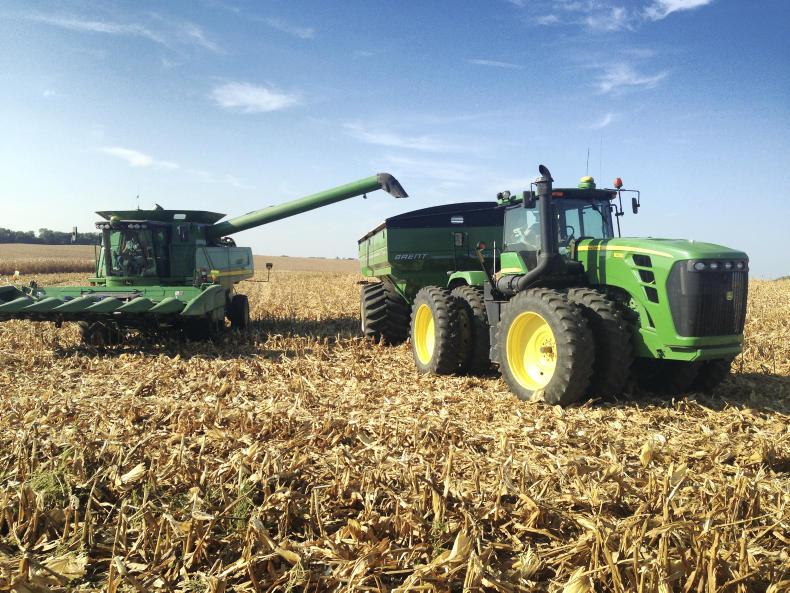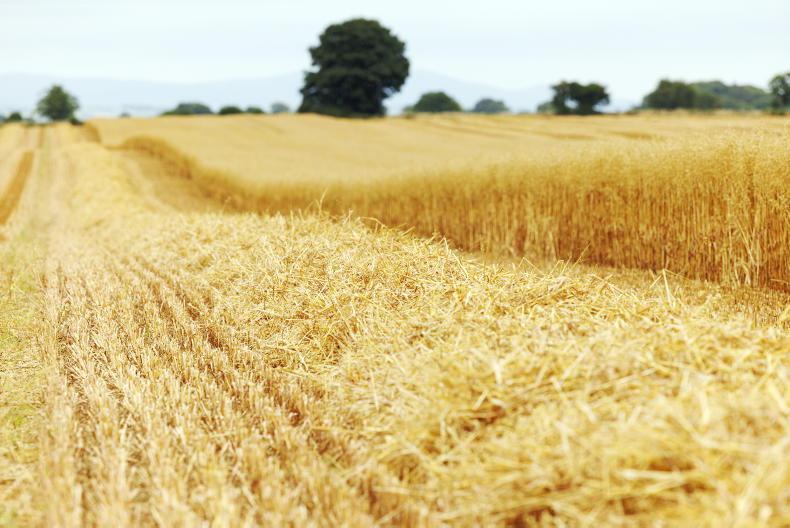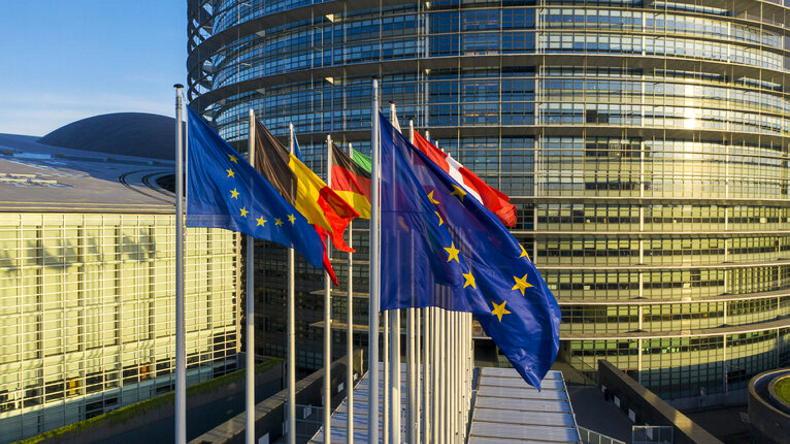Once Brexit happens, it will be interesting to see what the term “Global Britain” really means in a new era of, potentially, being free to trade with the rest of the world outside the EU.
With the UK government securing just seven trade arrangements out of a total of 69 deals currently covered by the EU, it’s a clear signal that other countries will play hardball in any negotiations.
Having travelled throughout the US recently as part of my Nuffield Scholarship, I saw first-hand the current pressures on US agriculture.
I also got an American perspective on possible opportunities that the agri-food chain might seek from a UK trade deal.
With the size of the US economy and the fact it’s the UK’s largest trading partner, it will likely be the UK that will have to concede the most to get a deal through
Politicians on both sides of the Atlantic often talk about the special relationship between the UK and the US, however, US President Donald Trump seems to have an America-first protectionist agenda when it comes to the economy and trade.
With the size of the US economy and the fact it’s the UK’s largest trading partner, it will likely be the UK that will have to concede the most to get a deal through.
It will probably push for greater access to the heavily protected US financial service sector, given that it accounts for almost 70% of UK gross domestic product (GDP). Agriculture, on the other hand, represents just 0.52% of UK GDP.
In contrast, US agriculture represents 5.5% of GDP and is worth almost one trillion dollars to the US economy.
With recent calls having been made by US officials and lobbyists in the large food corporations for regulatory alignment for agriculture products entering the UK, it’s clear that the US wants concessions for American food products.
US export markets
In recent years, US agriculture has been under severe financial pressure, with the farm economy down 52% in the last five years.
This has been caused by a combination of challenges, including record production, declining domestic consumption and escalating trade tariffs due to ongoing trade wars.
With many of President Trump’s supporters coming from rural areas, the US administration is coming under increasing pressure to deliver prosperity for farmers if it wants to hold on to power in Washington beyond 2020.
Recent trade deals concluded with Canada and Mexico promised to increase the amount of US dairy exports.
Trade wars are continuing to negatively affect US agriculture
However, this is yet to bring any change in fortunes on the ground.
I understand that export figures have stayed relatively static for the past year, in contradiction with President Trump’s boasts of many extra containers of dairy products being shipped out.
Trade wars are continuing to negatively affect US agriculture. Most notable is China, which has been shifting reliance away from American food products, with dairy exports to China shrinking from 16% pre-trade war to just 5% in 2018, a figure expected to decline further in 2019. This is bad for an industry that continues to expand production at over 1% per annum.
The cereals industry is also suffering, with buyers switching supply for key ingredients such as soy and wheat to South American countries, most notably Brazil.
Quality
In my experience, the quality of US food is quite good and it is very affordable.
Despite the headlines warning UK consumers of chlorine-washed chicken and hormone-treated beef, it is hard to say that it’s of lesser quality than UK food.
The lack of food labelling is the most notable difference
Many farmers in the US have similar rules to abide by around traceability, food safety and ever-increasing environmental legislation. However, the lack of food labelling is the most notable difference.
In summary, it is clear that if the UK fails to protect its agri-food industry in future trade deals with the US, then farmers here would face significant competition from an industry that can produce food at a lower cost.
Read more
Fast-changing food market in China
Beyond Brexit: examining trade between the EU and the rest of the world
Once Brexit happens, it will be interesting to see what the term “Global Britain” really means in a new era of, potentially, being free to trade with the rest of the world outside the EU.
With the UK government securing just seven trade arrangements out of a total of 69 deals currently covered by the EU, it’s a clear signal that other countries will play hardball in any negotiations.
Having travelled throughout the US recently as part of my Nuffield Scholarship, I saw first-hand the current pressures on US agriculture.
I also got an American perspective on possible opportunities that the agri-food chain might seek from a UK trade deal.
With the size of the US economy and the fact it’s the UK’s largest trading partner, it will likely be the UK that will have to concede the most to get a deal through
Politicians on both sides of the Atlantic often talk about the special relationship between the UK and the US, however, US President Donald Trump seems to have an America-first protectionist agenda when it comes to the economy and trade.
With the size of the US economy and the fact it’s the UK’s largest trading partner, it will likely be the UK that will have to concede the most to get a deal through.
It will probably push for greater access to the heavily protected US financial service sector, given that it accounts for almost 70% of UK gross domestic product (GDP). Agriculture, on the other hand, represents just 0.52% of UK GDP.
In contrast, US agriculture represents 5.5% of GDP and is worth almost one trillion dollars to the US economy.
With recent calls having been made by US officials and lobbyists in the large food corporations for regulatory alignment for agriculture products entering the UK, it’s clear that the US wants concessions for American food products.
US export markets
In recent years, US agriculture has been under severe financial pressure, with the farm economy down 52% in the last five years.
This has been caused by a combination of challenges, including record production, declining domestic consumption and escalating trade tariffs due to ongoing trade wars.
With many of President Trump’s supporters coming from rural areas, the US administration is coming under increasing pressure to deliver prosperity for farmers if it wants to hold on to power in Washington beyond 2020.
Recent trade deals concluded with Canada and Mexico promised to increase the amount of US dairy exports.
Trade wars are continuing to negatively affect US agriculture
However, this is yet to bring any change in fortunes on the ground.
I understand that export figures have stayed relatively static for the past year, in contradiction with President Trump’s boasts of many extra containers of dairy products being shipped out.
Trade wars are continuing to negatively affect US agriculture. Most notable is China, which has been shifting reliance away from American food products, with dairy exports to China shrinking from 16% pre-trade war to just 5% in 2018, a figure expected to decline further in 2019. This is bad for an industry that continues to expand production at over 1% per annum.
The cereals industry is also suffering, with buyers switching supply for key ingredients such as soy and wheat to South American countries, most notably Brazil.
Quality
In my experience, the quality of US food is quite good and it is very affordable.
Despite the headlines warning UK consumers of chlorine-washed chicken and hormone-treated beef, it is hard to say that it’s of lesser quality than UK food.
The lack of food labelling is the most notable difference
Many farmers in the US have similar rules to abide by around traceability, food safety and ever-increasing environmental legislation. However, the lack of food labelling is the most notable difference.
In summary, it is clear that if the UK fails to protect its agri-food industry in future trade deals with the US, then farmers here would face significant competition from an industry that can produce food at a lower cost.
Read more
Fast-changing food market in China
Beyond Brexit: examining trade between the EU and the rest of the world









SHARING OPTIONS